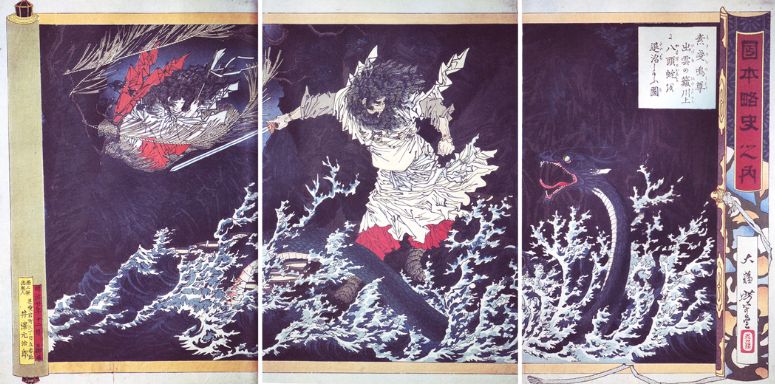The Origin of Yokai

In the heart of Japanese folklore lies a captivating world of supernatural beings known as yokai. These enigmatic and often whimsical creatures have been an integral part of Japanese culture for centuries, captivating the imagination and offering insights into the country’s history, beliefs, and creativity. From ancient legends to modern pop culture, the origins and evolution of yokai weave a fascinating tapestry of the extraordinary and the everyday.
Ancient Beginnings: Spirits, Gods, and Legends
Yokai trace their origins back to ancient Japan, where they were deeply interwoven with religious beliefs, animism, and the connection between humans and the natural world. In Shintoism, Japan’s indigenous religion, spirits known as kami were believed to reside in natural phenomena, objects, and even landscapes. Some of these spirits evolved into the iconic yokai we recognize today.
Japanese mythology and folklore contributed to the development of yokai as well. Ancient texts like the “Kojiki” and “Nihon Shoki” documented stories of gods, mythical creatures, and supernatural occurrences. These tales laid the foundation for the diverse array of yokai that would emerge over time.

The Golden Age of Yokai: Edo Period
The Edo period (1603-1868) marked a golden age for yokai, as the flourishing urban culture of the time gave rise to a plethora of stories, artwork, and literature centered around these supernatural beings. Woodblock prints, known as “ukiyo-e,” depicted yokai in vivid detail, offering glimpses into their various forms and attributes.
One of the most famous collections of yokai tales from this period is “Kaidan” by Lafcadio Hearn, a compilation of eerie stories that introduced yokai to Western audiences. These narratives often carried moral lessons or were used to explain natural phenomena, blending the fantastical with the everyday.
Modern Resonance: Yokai in Pop Culture
Yokai continue to thrive in modern Japanese culture, albeit in new and intriguing ways. From manga and anime to video games and movies, yokai have found a permanent place in pop culture. Works such as the “GeGeGe no Kitaro” series by manga writer Shigeru Mizuki have popularized yokai characters, bringing them into the mainstream consciousness.
Types of Yokai: A Diverse Spectrum
Yokai come in a wide range of forms, from the mischievous and playful to the sinister and terrifying. Some yokai are shape-shifters, capable of taking on human forms or changing their appearance at will. Others are born from objects that have existed for a long time or are formed through supernatural events.
Some notable yokai include:
Kappa: Water-dwelling creatures resembling turtles or amphibians, known for their mischievous nature.
Tanuki: Shapeshifting raccoon dogs that are often depicted as tricksters and pranksters.
Tengu: Bird-like spirits with long noses, revered as protectors of mountains and forests.
Conclusion
Yokai, with their diverse forms and multifaceted origins, are more than mere supernatural entities; they are cultural touchstones that reflect Japan’s deep connection to its past, its reverence for nature, and its creative spirit. These captivating creatures continue to enchant audiences around the world, serving as a bridge between the ancient and the contemporary and offering a timeless glimpse into the mystical heart of Japan.
Copyright © 2024 Little Book of Japan
